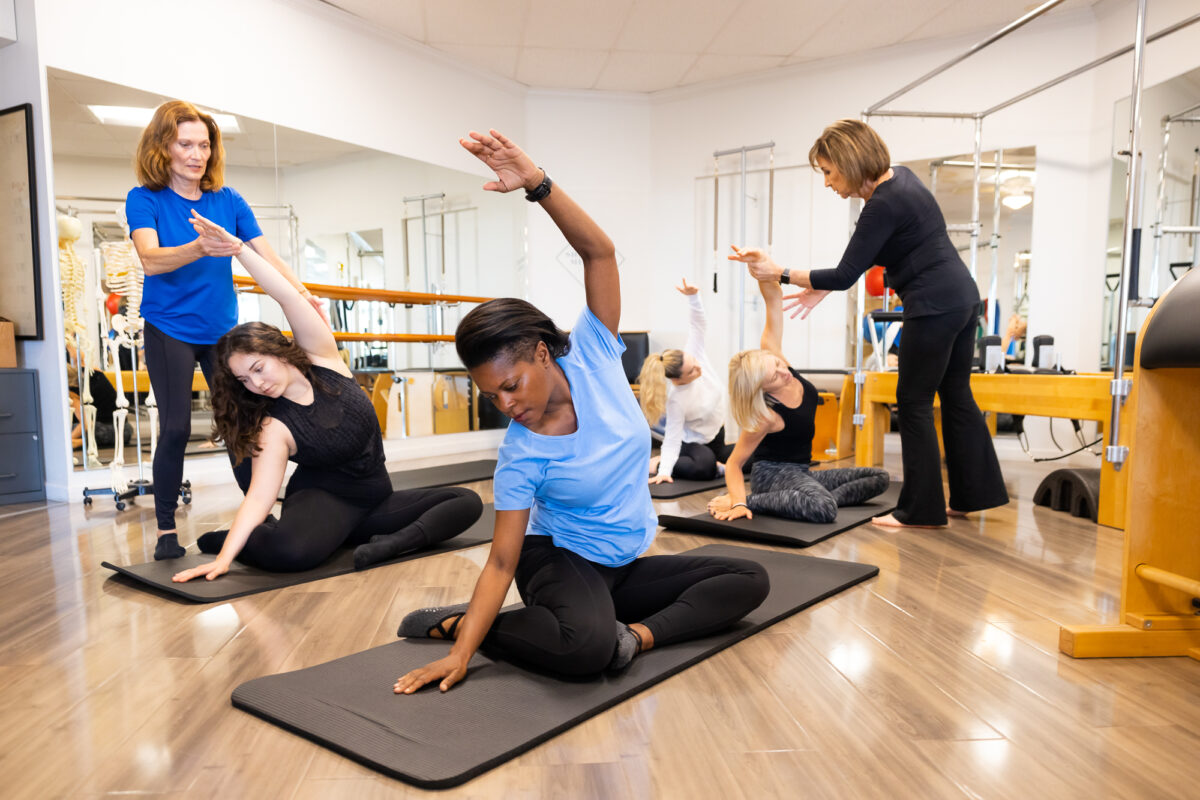June is National Scoliosis Month! This is a great time to discuss how Pilates can help improve and manage scoliosis symptoms, as well as check in with our spinal health in general.
According to the National Scoliosis Foundation, this condition affects 6-9 million people in the United States. While there is not a known cure for scoliosis, many medical professionals encourage practicing Pilates alongside scoliosis treatments to make a difference in the lives of those with this condition—to move better and feel better while gaining strength and confidence in movement.
Contact the Westwood Pilates instructors at Sheppard Method Pilates to discuss how we can help you strengthen and lengthen your spine. Schedule your first class now!
What is Scoliosis?
Scoliosis is a condition that causes a sideways curvature of the spine. It is usually diagnosed in childhood or adolescence but can be developed later in life, specifically in aging adults. In fact, according to the Scoliosis Research Society, the condition is increasing in prevalence and the numbers are expected to continue to grow in the future. It is important to maintain the health of the back and spine regardless of the condition and can help to mitigate the progression of any spinal irregularities and back issues.
The curvatures of the spine of an individual with scoliosis vary. When considered scoliotic, these curvatures pull the spine to the side, and may also involve some form of rotation or twist. The spine can be recognized as a “C” or an “S” shape when affected. Scoliosis can be mild or severe, with differing levels of chronic pain. Severe conditions resulting in possible lung and heart damage. Generally, scoliosis worsens when not treated. It is important to work to improve and manage any spinal conditions—and that is possible with targeted regular Pilates practice.
Scoliosis Treatment with Pilates
Pilates has been proven to work alongside scoliosis treatments to better improve symptoms through strengthening and lengthening the spine, improving posture, and increasing joint mobility. Evidence shows that Pilates can also help to improve balance and muscle conditioning, and scoliosis patients have reported that Pilates can relieve tension and even significant chronic pain. Pilates accomplishes this by helping to correct the muscle adaptations and patterns of development caused by scoliotic curvatures of the spine.
Pilates for scoliosis helps to condition and improve:
- Body awareness
- Neutral alignment of torso and spine
- Overall balance
- Unilateral evenness through elongation
- Stability
- Mobility
- Spinal decompression
- Flexibility
- Overall strength
Pilates Movements For Spinal Health
There are many Pilates exercises that help with scoliosis symptoms. Movements that are designed to strengthen the back, lengthen the spine, as well as stabilize the trunk are most effective. While there may be some modifications (like with any individual approaching a Pilates move), the following are especially effective and accessible for those with scoliosis:
- Side-bend with Pilates ball
- Mermaid stretch
- Finding your pelvic floor (pelvic tilt)
- Deep abdominal breathwork
- Kneeling swimmer
- Single leg stand
- Kneeling side stretch
- Reformer Pilates classes
How Pilates Helps Your Back
Even if you have not been diagnosed with scoliosis, spinal health is vitally important. Back and core strength, stabilization, pain relief, mobility and flexibility, and correct posture all contribute to whole-body wellness, and all can be accomplished through regular Pilates practice.
At Sheppard Method Pilates in Western Westwood, our team of expert instructors is trained in Pilates exercises specifically for spinal health, back strength, and movements for scoliosis management. We want you to feel empowered in your body—during National Scoliosis Month and all year long!
Call the Westwood Pilates instructors at Sheppard Method Pilates to discuss how we can help you include Pilates in your exercise regimen and improve your spinal health!

